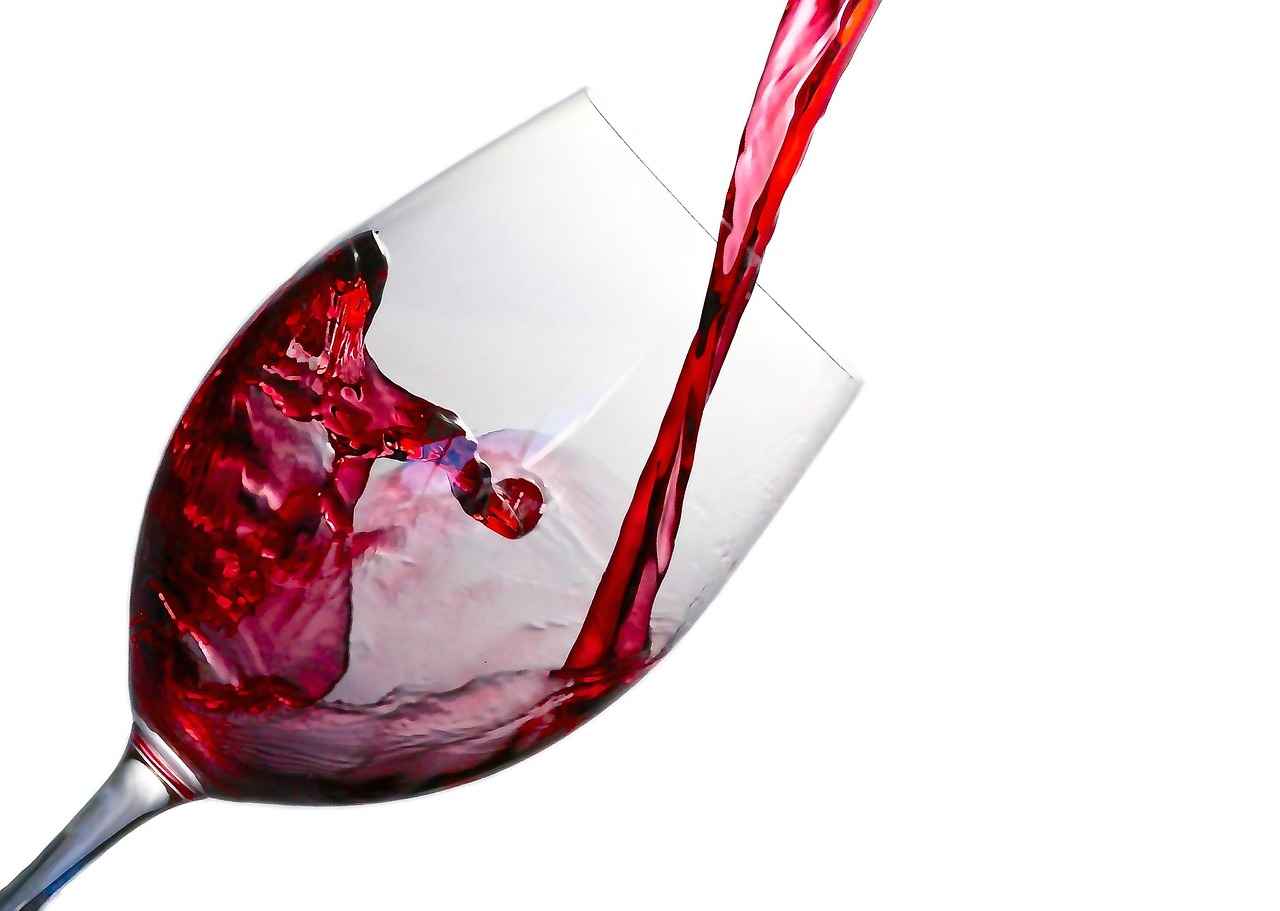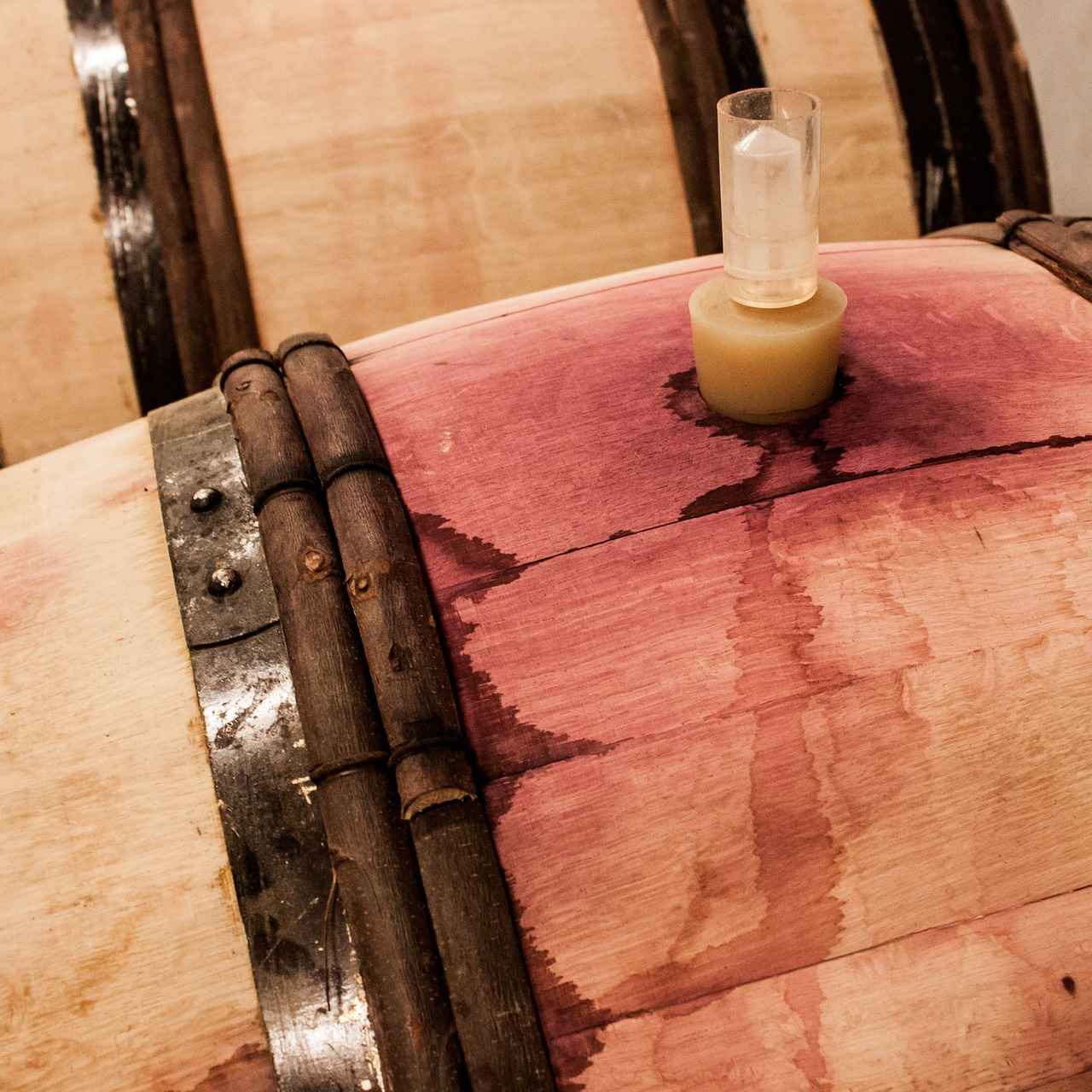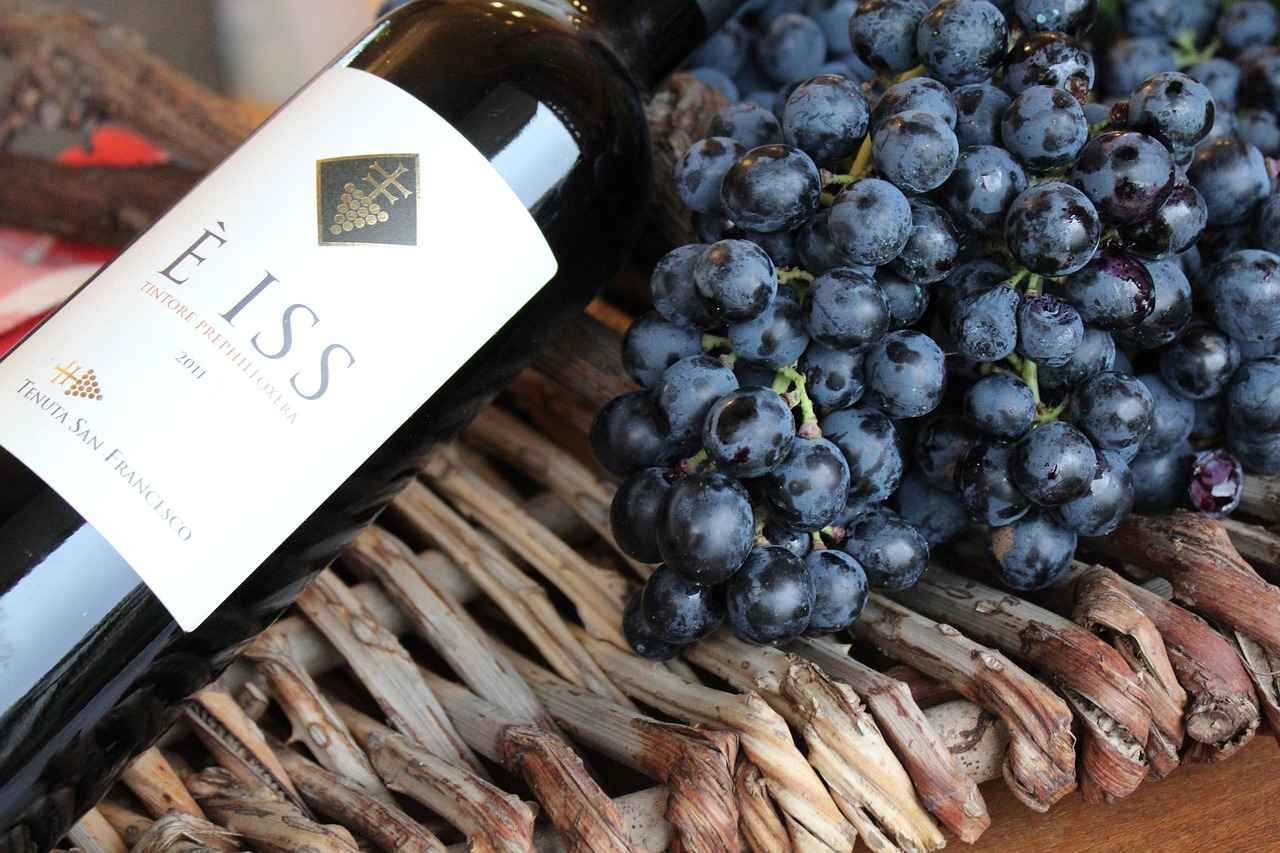Welcome to the Sweet Red Wine Guide, where we delve into the delightful world of sweet red wines that won’t put a dent in your wallet. With a plethora of options available for under $20, this guide is tailored for wine enthusiasts and casual drinkers alike. Whether you’re planning a dinner party, a cozy night in, or simply looking to expand your palate, there’s a sweet red wine waiting for you. Let’s explore the unique characteristics, production methods, and the best bottles currently on the market.
Sweet red wine is renowned for its rich flavors and aromatic profiles, making it an appealing choice for those who prefer a smoother, less tannic experience. Unlike dry wines, sweet reds retain more of the natural sugars from the grapes, resulting in a luscious taste that can range from fruity to dessert-like. This unique sweetness can be attributed to various factors, including the grape variety, the winemaking process, and the region where the wine is produced. Understanding these elements can significantly enhance your tasting experience, allowing you to appreciate the nuances that each bottle offers.
The creation of sweet red wine involves specific fermentation techniques designed to preserve the wine’s natural sugars. Winemakers often halt fermentation before all the sugars are converted into alcohol, resulting in a sweeter profile. This process can vary greatly depending on the grape variety used. For instance, grapes like Zinfandel and Merlot are often chosen for their high sugar content, which contributes to the final sweetness of the wine. Additionally, some sweet red wines are produced using fortification, where a distilled spirit is added to the wine, halting fermentation and preserving the residual sugars. This method is commonly used in the production of Port wine.
Finding exceptional sweet red wines at an affordable price can be a daunting task, but fear not! Here are some of the best bottles currently available for under $20:
- Apothic Red Blend – A popular choice with notes of dark fruit and a hint of vanilla.
- Jam Jar Sweet Shiraz – Known for its jammy fruit flavors, this wine is perfect for those who enjoy a sweeter profile.
- Chateau Ste. Michelle Sweet Riesling – While primarily a white wine, its sweet characteristics can appeal to red wine lovers as well.
- Robert Mondavi Private Selection Sweet Red – A balanced wine with ripe berry flavors and a touch of spice.
Pairing sweet red wine with food can elevate your dining experience. The key is to find dishes that complement the wine’s sweetness. For instance, sweet reds pair beautifully with spicy dishes, as the sweetness can counterbalance the heat. Consider serving a sweet red with barbecue ribs or spicy Asian cuisine. Additionally, sweet red wines are fantastic companions for desserts. Chocolate desserts, fruit tarts, and even creamy cheeses can create a harmonious balance when paired with the right sweet red wine.
Moderate consumption of sweet red wine may offer several potential health benefits. One notable component found in red wine is resveratrol, a compound linked to heart health and reduced inflammation. Some studies suggest that resveratrol can help lower blood pressure and improve cholesterol levels. However, it’s essential to consume wine in moderation to reap these benefits without the adverse effects of excessive alcohol consumption.
In conclusion, sweet red wines provide a delightful experience for both casual drinkers and connoisseurs. With a variety of options available under $20, there’s something for everyone. Whether you’re pairing it with food or enjoying it solo, knowing the best bottles and how to appreciate them can enhance your wine journey.

What Makes Sweet Red Wine Unique?
Sweet red wine has carved out a special niche in the world of wine appreciation, attracting a diverse audience ranging from casual drinkers to seasoned connoisseurs. What makes sweet red wine unique is its ability to deliver a rich tapestry of flavors and aromas that appeal to those seeking a less tannic experience. Unlike their drier counterparts, sweet reds typically contain higher levels of residual sugar, which contributes to their luscious taste and aromatic complexity. This sweetness can evoke a sense of indulgence and warmth, making them particularly enjoyable for social gatherings or cozy evenings at home.
One of the defining characteristics of sweet red wine is its fruit-forward profile. Popular varieties like Zinfandel, Merlot, and Lambrusco often showcase vibrant notes of ripe berries, cherries, and plums. These fruity elements are complemented by hints of spices, chocolate, and even floral undertones, creating a multi-dimensional tasting experience. The sweetness in these wines can also help to balance out acidity, making them smoother and more approachable for those who may find drier wines too harsh.
Another factor that sets sweet red wine apart is its versatility. While many people associate sweet red wines with desserts, they can also pair beautifully with a variety of savory dishes. The natural sweetness can enhance flavors in roasted meats, barbecued dishes, and even spicy cuisines, creating an unexpected yet delightful culinary experience. This adaptability makes sweet red wines a great choice for both casual meals and more elaborate dining occasions.
To truly appreciate sweet red wine, it’s important to understand the winemaking process behind it. Sweetness is primarily achieved through specific fermentation techniques that allow winemakers to retain the natural sugars found in the grapes. This can involve stopping fermentation early or using specific yeast strains that produce less alcohol and more residual sugar. As a result, sweet red wines often have a lower alcohol content, making them lighter and more refreshing.
For those new to sweet red wines, it’s beneficial to explore various types and styles. Whether you enjoy the bold and jammy characteristics of a Zinfandel or the rich, fortified sweetness of a Port, there’s a sweet red wine out there to suit every palate. By understanding their unique qualities and experimenting with different pairings, you can enhance your tasting experience and discover the delightful world of sweet red wines.
In summary, sweet red wine stands out for its rich flavors, aromatic complexity, and versatility. Its ability to cater to a wide range of preferences and occasions makes it a beloved choice among wine enthusiasts. Whether you’re sipping it solo or pairing it with food, sweet red wine offers a delightful experience that can elevate any moment.

How Is Sweet Red Wine Made?
Sweet red wine has captured the hearts of many wine enthusiasts with its luscious flavors and inviting aromas. The process of crafting this delightful beverage is a fascinating journey that combines tradition, science, and artistry. Understanding how sweet red wine is made not only enhances your appreciation for the drink but also allows you to explore its unique characteristics. In this section, we will delve into the fermentation techniques that preserve natural sugars, the role of different grape varieties, and the overall winemaking process.
The production of sweet red wine involves a meticulous process that aims to retain the natural sugars of the grapes, resulting in a rich and flavorful beverage. The journey begins in the vineyard, where grape selection is crucial. Varieties such as Zinfandel, Merlot, and Cabernet Sauvignon are often chosen for their inherent sweetness and fruity profiles. Each grape variety contributes distinct flavors, which are essential in crafting a well-balanced sweet red wine.
Once the grapes are harvested, they undergo a process called crushing, where the fruit is gently pressed to release its juice. This juice, rich in sugars, is then transferred to fermentation tanks. The fermentation process is where the magic happens. Winemakers can control the level of sweetness by manipulating fermentation conditions. For sweet red wines, it is common to stop fermentation before all the sugars are converted to alcohol. This is achieved by cooling the fermentation tanks or adding sulfur dioxide to inhibit yeast activity.
Another technique used in sweet red wine production is known as fortification. This involves adding a distilled spirit, usually brandy, to the wine during fermentation. This not only increases the alcohol content but also halts fermentation, leaving residual sugars intact. This method is particularly popular in the production of Port wine, which is renowned for its sweetness and complexity.
| Grape Variety | Flavor Profile | Common Sweet Red Wines |
|---|---|---|
| Zinfandel | Jammy, fruity | White Zinfandel |
| Merlot | Soft, plummy | Sweet Merlot |
| Cabernet Sauvignon | Rich, dark fruit | Cameo Cabernet |
After fermentation, the wine is aged in barrels or tanks, allowing it to develop its flavors further. Aging can last from a few months to several years, depending on the desired outcome. During this time, winemakers may also blend different grape varieties to create a more complex flavor profile.
Once the aging process is complete, the wine is filtered and bottled. It’s essential to store sweet red wine properly to maintain its quality. Ideally, it should be kept in a cool, dark place, away from direct sunlight, and served at the right temperature to enhance its flavor.
In conclusion, the art of making sweet red wine is a blend of science and creativity. By carefully selecting grape varieties, employing specific fermentation techniques, and allowing the wine to age gracefully, winemakers produce a delightful beverage that appeals to a wide range of palates. Whether you are a seasoned wine enthusiast or a casual drinker, understanding the winemaking process adds depth to your appreciation of sweet red wines.
What Grapes Are Commonly Used?
When it comes to crafting delightful sweet red wines, the choice of grape variety plays a pivotal role. Each grape brings its own unique characteristics, contributing to the overall sweetness and flavor profile of the wine. In this section, we will explore some of the most popular grape varieties used in the production of sweet red wines, highlighting their distinct qualities and how they enhance the wine’s sweetness.
Several grape varieties are particularly well-suited for producing sweet red wines. Here’s a closer look at some of the most notable ones:
- Zinfandel: This grape is one of the most popular choices for sweet red wines, especially in the United States. Zinfandel is renowned for its jammy fruit flavors, often exhibiting notes of raspberry, blackberry, and plum. Its naturally high sugar content allows winemakers to create wines that are both sweet and rich in flavor. The fermentation process can be adjusted to retain more residual sugar, resulting in a luscious, sweet profile that many wine lovers adore.
- Merlot: Known for its smooth and approachable nature, Merlot can also be used to make sweet red wines. The grape’s soft tannins and fruity characteristics, such as cherry and chocolate, make it an excellent candidate for sweetness. Winemakers often leave some sugar unfermented, allowing the wine to maintain a velvety texture and a rich, sweet finish.
- Port: This fortified wine from Portugal is a classic example of sweet red wine. Port is made from a blend of different grape varieties, including Touriga Nacional and Tinta Roriz. The fermentation is halted by adding grape spirits, which preserves the natural sugars and results in a wine that is both rich and complex. The flavors are often deep and intense, with notes of dried fruit, chocolate, and spices, making it a favorite for dessert pairings.
- Shiraz/Syrah: Depending on the region, Shiraz (or Syrah) can also be crafted into sweet red wines. This grape is known for its bold flavors and can exhibit notes of dark fruits, pepper, and smoke. When produced as a sweet wine, the residual sugar enhances its fruity character, creating a full-bodied experience that is both satisfying and enjoyable.
- Lambrusco: This Italian grape is famous for its sparkling sweet red wines. Lambrusco wines are often fruity and refreshing, with flavors of strawberries and cherries. The natural effervescence combined with its sweetness makes it a popular choice for casual drinking and celebrations.
These grape varieties not only contribute to the sweetness of the wine but also enhance its overall complexity and enjoyment. Each offers a different experience, allowing wine enthusiasts to explore a wide range of flavors and styles. Whether you prefer a jammy Zinfandel or a rich Port, the world of sweet red wines is diverse and inviting.
In conclusion, understanding the grape varieties used in sweet red wine production can greatly enhance your appreciation for this delightful beverage. Each grape brings its own unique attributes, making sweet red wines an exciting and varied category for both new and experienced wine drinkers.
How Does Zinfandel Contribute to Sweetness?
Zinfandel is a fascinating grape variety that plays a significant role in the world of sweet red wines. Known for its vibrant fruit flavors and distinctive aroma, Zinfandel is often celebrated for its ability to produce wines that are not only sweet but also rich and complex. This article explores how Zinfandel contributes to the sweetness of wines, delving into its characteristics, winemaking techniques, and the overall appeal of Zinfandel-based sweet wines.
Zinfandel is a versatile grape that thrives in various climates, particularly in California, where it has become a staple. The grape is known for its high sugar content, which is essential in creating sweet wines. When harvested at optimal ripeness, Zinfandel grapes develop intense flavors reminiscent of jammy fruits such as blackberries, cherries, and plums. These flavors are not only delicious but also contribute to the wine’s overall sweetness.
One of the unique aspects of Zinfandel is its ability to express the terroir, or the environmental conditions in which it is grown. This means that Zinfandel wines can vary significantly from one region to another, offering a diverse tasting experience. The grape’s thick skins also contribute to its rich color and robust flavor profile, making it an ideal candidate for sweet red wine production.
The winemaking process for Zinfandel involves several key steps that enhance its natural sweetness. After harvesting, the grapes are crushed and fermented. Winemakers often use controlled fermentation techniques to retain the grape’s natural sugars. By stopping fermentation early, they can ensure that a higher level of residual sugar remains in the wine, resulting in a sweeter profile.
Additionally, some winemakers may choose to fortify Zinfandel wines, which involves adding distilled spirits to the wine during fermentation. This process halts fermentation and preserves the natural sugars, leading to a sweeter end product. The combination of these techniques allows Zinfandel to shine as a sweet red wine, appealing to those who prefer a more indulgent taste.
Zinfandel’s popularity in sweet red wine production can be attributed to its approachable flavor profile and versatility. Many consumers are drawn to its fruit-forward characteristics, making it an excellent choice for those new to wine tasting. The sweetness of Zinfandel wines can also complement a variety of foods, from spicy dishes to rich desserts, enhancing the overall dining experience.
Moreover, the affordability of Zinfandel wines makes them accessible to a wide audience. Many quality Zinfandel bottles are available at reasonable prices, allowing wine enthusiasts to explore different styles without breaking the bank. This combination of flavor, versatility, and affordability solidifies Zinfandel’s status as a go-to grape for sweet red wines.
In summary, Zinfandel is a remarkable grape that contributes significantly to the sweetness of red wines. Its high sugar content, combined with thoughtful winemaking techniques, results in a delightful and flavorful drinking experience. Whether you are a seasoned wine lover or a casual drinker, Zinfandel offers a range of options that can satisfy any palate. As you explore the world of sweet red wines, keep an eye out for Zinfandel—it just might become your new favorite.
What About Port Wine?
Port wine is a unique and fortified wine hailing from the picturesque Douro Valley in Portugal. This exquisite beverage is renowned for its rich sweetness, making it a popular choice among dessert wine enthusiasts. But what exactly sets Port apart from other wines, and why is it such a cherished drink around the world? Let’s delve deeper into the world of Port wine.
First and foremost, Port wine is made using a special process that involves the addition of grape spirit or brandy during fermentation. This technique stops the fermentation process prematurely, leaving behind a higher concentration of natural sugars. As a result, Port wine boasts a delightful sweetness that is both complex and satisfying. The sweetness, combined with its rich flavors, makes it a favorite choice for pairing with desserts or enjoying on its own.
Port wine comes in several styles, each with its own unique characteristics. The most common types include:
- Tawny Port: Aged in wooden casks, tawny ports develop a nutty flavor with hints of caramel and dried fruits. They are typically enjoyed chilled and are perfect for sipping.
- Ruby Port: This type is known for its vibrant red color and fruity flavors, often reminiscent of berries. Ruby ports are less aged than tawny ports, preserving their youthful character.
- Vintage Port: Made from grapes harvested in a single exceptional year, vintage ports are aged in bottles and can improve for decades. They are rich, full-bodied, and highly sought after by collectors.
One of the most appealing aspects of Port wine is its versatility. While it is often served as a dessert wine, it can also complement a variety of savory dishes. For instance, pairing a tawny port with a cheese platter featuring blue cheese or aged cheddar can create a delightful balance of flavors. Similarly, ruby ports can enhance the experience of chocolate desserts or fruit tarts.
Furthermore, Port wine has a fascinating history that dates back to the 17th century when British merchants began to import it from Portugal. The wine quickly gained popularity and became a staple in British society. Today, it remains a symbol of celebration and indulgence, often enjoyed during special occasions or cozy evenings at home.
In conclusion, Port wine is more than just a sweet beverage; it is a rich tapestry of flavors, history, and tradition. Whether you are a seasoned wine enthusiast or a casual drinker, exploring the various styles of Port can enhance your appreciation for fortified wines. So, the next time you’re in the mood for something sweet, consider reaching for a bottle of Port wine—your taste buds will thank you!
What Role Does Fermentation Play?
Understanding the fermentation process is essential for anyone interested in the art of winemaking, especially when it comes to crafting sweet red wines. Fermentation is not just a scientific process; it is a pivotal stage that significantly influences the flavor, aroma, and sweetness of the final product. In this section, we will explore how winemakers manipulate fermentation to achieve the desired sweetness levels in sweet red wines, ensuring that each bottle is a delightful experience for the consumer.
Fermentation is the process by which yeast converts sugars present in grape juice into alcohol and carbon dioxide. The balance between these sugars and the alcohol produced is crucial in determining the sweetness of the wine. Winemakers can control this balance through various techniques, allowing them to create wines that cater to different palates.
- Timing of Fermentation: One of the primary methods winemakers use to control sweetness is by stopping fermentation early. By halting the process before all the sugars are converted into alcohol, they can retain more residual sugar, resulting in a sweeter wine.
- Yeast Selection: Different strains of yeast have varying levels of sugar tolerance. Some yeasts can ferment all the sugars, while others may leave behind more residual sugar. Winemakers often choose yeast strains that align with their desired sweetness level.
- Temperature Control: The temperature at which fermentation occurs can also impact sweetness. Cooler temperatures tend to slow down fermentation, allowing more sugar to remain in the wine. Conversely, warmer temperatures can accelerate fermentation, producing drier wines.
Additionally, winemakers may choose to add sugar or other sweetening agents after fermentation to enhance the sweetness of the wine. This practice is known as “chaptalization” and is often used in regions where grapes may not reach optimal sugar levels due to climate conditions.
To achieve the perfect balance of sweetness, winemakers employ a range of techniques. Here are some of the most common methods:
| Technique | Description |
|---|---|
| Early Stopping of Fermentation | Winemakers may use cooling methods or add sulfur dioxide to inhibit yeast activity, stopping fermentation before all sugars are converted. |
| Fortification | Adding distilled spirits to the wine during fermentation can halt the process, preserving residual sugars and increasing alcohol content. |
| Blending | Combining dry wines with sweeter wines can also adjust the sweetness level, allowing for a balanced flavor profile. |
Each of these techniques allows winemakers to craft sweet red wines that maintain their character while providing the desired sweetness. The artistry lies in the careful selection and combination of these methods to create a harmonious balance in the final product.
In summary, fermentation plays a crucial role in determining the sweetness of sweet red wines. By understanding the various factors that influence this process, winemakers can create wines that cater to a wide range of tastes, ensuring that there is a sweet red wine for everyone to enjoy.

What Are the Best Sweet Red Wines Under $20?
Finding quality sweet red wines at an affordable price can be a challenge. With so many options on the market, it’s easy to feel overwhelmed. However, there are some fantastic sweet red wines available for under $20 that won’t compromise on taste or quality. This guide will explore some of the best options currently available, ensuring you can enjoy a delightful glass without breaking the bank.
When searching for sweet red wines, it’s essential to consider the flavor profile, the grape variety, and the winemaking process. Here are some standout selections that are both delicious and budget-friendly:
- Apothic Red – This blend of Zinfandel, Syrah, and Merlot offers a rich, fruit-forward flavor with notes of cherry and vanilla. Its smooth finish makes it an excellent choice for those new to sweet reds.
- Jam Jar Sweet Shiraz – Hailing from South Africa, this wine is known for its jammy fruit flavors, particularly blackberry and plum. It’s slightly fizzy, which adds a unique twist to its sweetness.
- St. Francis Old Vines Zinfandel – This wine showcases the classic characteristics of Zinfandel with a hint of sweetness. It has a robust body and flavors of dark fruits, making it perfect for pairing with grilled meats.
- Roscato Rosso Dolce – An Italian sweet red, Roscato is lightly sparkling and has a lower alcohol content. It features flavors of ripe berries and is a great choice for casual sipping or pairing with light desserts.
- Chateau Ste. Michelle Sweet Riesling – While technically a white wine, this Riesling is worth mentioning for its sweet profile. It pairs beautifully with spicy dishes and is often enjoyed by those who appreciate a sweeter wine.
Several brands consistently produce high-quality sweet red wines at affordable prices. Brands like Apothic, Jam Jar, and Chateau Ste. Michelle have established reputations for delivering great taste without a hefty price tag. Their commitment to quality and flavor makes them reliable choices for both casual drinkers and wine enthusiasts alike.
As of 2023, some sweet red wines have gained popularity due to their exceptional taste and value. The wines mentioned earlier are among the top contenders, but others like Menage a Trois Red and Barefoot Sweet Red Blend are also highly recommended. These wines are widely available and often praised for their approachable flavor profiles.
In summary, exploring the world of sweet red wines doesn’t have to be a costly endeavor. With numerous options under $20, you can find something that suits your taste and occasion. Whether you’re hosting a gathering or simply enjoying a quiet evening at home, these wines promise to deliver satisfaction without straining your wallet.
Which Brands Offer Great Value?
When it comes to sweet red wines, finding a bottle that delivers both quality and value can be a delightful challenge. Fortunately, several brands consistently produce fantastic sweet red wines that won’t break the bank. Below, we explore some of the most reputable brands that offer great value without compromising on taste.
Sweet red wines have gained popularity for their rich flavors and approachable sweetness, making them a favorite among casual drinkers and wine enthusiasts alike. Here are some brands renowned for their quality sweet red wines, all priced under $20:
- Apothic: Known for its bold blends, Apothic’s Apothic Red features a delightful mix of Zinfandel, Syrah, and Merlot. Its rich notes of cherry and vanilla make it a crowd-pleaser, and it’s often found for around $10 to $12.
- Barefoot: This brand offers a range of wines, but their Sweet Red is particularly noteworthy. With its fruity profile and hints of raspberry and cherry, it’s perfect for those who enjoy a sweeter palate, typically priced around $8 to $10.
- Yellow Tail: An Australian staple, Yellow Tail’s Semi-Sweet Red wine is a blend that’s easy to drink and pairs well with various foods. It’s budget-friendly, usually available for about $8.
- Franzia: While often associated with budget-friendly boxed wines, Franzia’s Sweet Red is surprisingly enjoyable. Its easy-drinking style and affordability (around $15 for a 5-liter box) make it a popular choice for gatherings.
- Bogle Vineyards: This family-owned winery produces a Sweet Red Blend that showcases rich fruit flavors balanced with a touch of sweetness. Priced around $12 to $15, it’s a fantastic value for quality wine.
These brands have established themselves in the wine industry by consistently delivering sweet red wines that cater to a variety of tastes and occasions. Whether you’re hosting a casual dinner party or simply enjoying a glass at home, these selections provide an excellent balance of flavor and affordability.
Moreover, many of these wines are widely available at local retailers and online, making it easy to find a bottle that suits your preference. Additionally, their approachable sweetness makes them versatile for pairing with various foods, from savory dishes to desserts.
In summary, when searching for great value in sweet red wines, consider exploring these brands. They not only offer delightful flavors that can satisfy your sweet tooth but also ensure you stay within your budget. Cheers to discovering your next favorite sweet red wine!
What Are the Top Picks for 2023?
As we dive into the world of sweet red wines in 2023, it’s clear that the market has evolved, with certain bottles emerging as favorites among wine enthusiasts. Whether you’re a seasoned connoisseur or just beginning your journey into the realm of sweet reds, this curated list highlights the top picks that offer both exceptional flavor and great value. Each of these selections is priced under $20, making them accessible for any occasion.
The allure of sweet red wines lies in their rich, fruity flavors and smooth finishes. Many consumers are drawn to the sweetness, which can make these wines a perfect match for various foods or even enjoyable on their own. The following selections have garnered attention for their unique characteristics and overall quality.
- Apothic Red – This blend of Zinfandel, Syrah, and Merlot offers a bold taste with notes of dark fruit and vanilla. Its smooth finish makes it a popular choice for casual gatherings.
- Barefoot Sweet Red – Known for its affordability and consistent quality, this wine is fruity and sweet, with hints of cherry and raspberry. It’s an excellent entry point for those new to sweet reds.
- Jam Jar Sweet Shiraz – This South African wine is celebrated for its jammy flavors and rich, bold character. It pairs wonderfully with barbecue and spicy dishes.
- Bogle Vineyards Sweet Red – With a blend of several grape varieties, this wine is known for its smoothness and balanced sweetness. It features flavors of black cherry and a hint of spice.
- Chateau Ste. Michelle Riesling – While technically a white wine, its sweet profile and versatility make it a beloved choice among sweet wine lovers. It’s perfect for pairing with a variety of foods.
Each of these wines has been chosen for its ability to deliver on taste without compromising your budget. They are widely available and often praised in reviews for their approachability and consistent quality. Whether you’re hosting a dinner party or simply enjoying a quiet evening at home, these bottles are sure to impress.
When selecting a sweet red wine, consider the occasion and your personal taste preferences. Some wines are fruitier, while others may have more complexity with spicy or earthy notes. Don’t hesitate to explore different brands and styles to find the perfect match for your palate.
In summary, the sweet red wines highlighted here not only promise delightful flavors but also represent great value for your money. As 2023 unfolds, these selections are sure to satisfy both casual drinkers and those seeking something special. Cheers to discovering your next favorite bottle!

How to Pair Sweet Red Wine with Food?
Pairing sweet red wine with food can significantly elevate your dining experience, transforming an ordinary meal into a delightful culinary adventure. Sweet red wines are known for their rich flavors and aromatic profiles, making them versatile companions to various dishes. Understanding how to pair these wines effectively can enhance both the wine and the food, creating a harmonious balance that excites the palate.
When it comes to pairing sweet red wine, the options are as diverse as the wines themselves. Here are some categories of dishes that complement the unique flavors of sweet reds:
- Cheeses: Sweet red wines pair beautifully with a variety of cheeses. Consider blue cheese or brie, which provide a rich creaminess that contrasts nicely with the sweetness of the wine. The saltiness of the cheese can also enhance the wine’s flavors.
- Grilled Meats: Surprisingly, sweet red wines can enhance the flavors of grilled meats. Try pairing a sweet Zinfandel with barbecue ribs or grilled chicken. The sweetness can balance the char and smokiness of the meat, creating a delightful flavor profile.
- Spicy Dishes: The sweetness in red wine can help to temper the heat in spicy dishes. For example, a sweet Shiraz can complement spicy Asian stir-fries or Mexican mole, providing a refreshing contrast to the spices.
- Desserts: Naturally, sweet red wines are a classic choice for desserts. Pairing them with chocolate cake or berry tarts can elevate the dessert experience. The wine’s sweetness can enhance the flavors of the dessert, creating a rich and indulgent finish to a meal.
While sweet red wines are often associated with desserts, they can also complement savory dishes in unexpected ways. Here are some suggestions:
- Duck or Game: The rich, gamey flavors of duck can be beautifully complemented by a sweet red wine, such as a fruity Merlot. The wine’s sweetness can balance the richness of the meat.
- Vegetarian Dishes: Sweet red wines can also enhance the flavors of roasted vegetables or hearty grain salads. A sweet red can bring out the natural sweetness in roasted carrots or beets.
- Pizza: A sweet red wine can be a delightful pairing with a pepperoni pizza. The wine’s sweetness contrasts with the savory flavors of the cheese and meat, making for a well-rounded bite.
In conclusion, the key to successfully pairing sweet red wine with food lies in understanding the balance of flavors. By experimenting with different combinations, you can discover what works best for your palate. Whether you’re savoring a glass with a decadent dessert or a savory main course, sweet red wine has the potential to enhance your dining experience, making it memorable and enjoyable.
What Desserts Go Well with Sweet Red Wine?
When it comes to the delightful world of sweet red wines, one of the most enjoyable aspects is how well they pair with desserts. The **rich flavors** and **natural sweetness** of these wines can enhance the experience of indulging in sweet treats, creating a perfect balance that tantalizes the taste buds. In this section, we will explore various desserts that complement sweet red wines, ensuring a memorable dining experience.
Sweet red wines, with their luscious profiles, can elevate a variety of desserts. Here are some ideal pairings to consider:
- Chocolate Desserts: Rich chocolate cakes, brownies, and even chocolate mousse are fantastic companions for sweet red wines. The **bitterness** of the chocolate contrasts beautifully with the wine’s sweetness, allowing both flavors to shine.
- Fruit-Based Desserts: Desserts like berry tarts or poached pears resonate well with sweet reds. The natural sweetness of the fruits amplifies the wine’s fruity notes, creating a harmonious blend.
- Cheesecake: A creamy cheesecake, especially when topped with a fruit compote, pairs wonderfully with sweet red wines. The **richness** of the cheesecake balances the wine’s sweetness, making every bite and sip a pleasure.
- Crème Brûlée: The caramelized sugar topping of crème brûlée offers a delightful contrast to the sweet red wine. The creamy texture and the slight bitterness of the burnt sugar enhance the wine’s flavor profile.
- Spiced Desserts: Desserts that incorporate spices, such as gingerbread or spiced cookies, can also be great matches. The warmth of the spices complements the wine’s fruity characteristics, creating a cozy pairing.
To illustrate the perfect pairings further, here’s a simple table showcasing some sweet red wines alongside recommended desserts:
| Sweet Red Wine | Recommended Dessert |
|---|---|
| Ruby Port | Chocolate Lava Cake |
| Brachetto d’Acqui | Berry Tart |
| Zinfandel | Cheesecake with Berry Compote |
| Lambrusco | Crème Brûlée |
| Sweet Shiraz | Spiced Cookies |
When selecting a dessert to pair with sweet red wine, consider the **balance of flavors**. The goal is to create a delightful experience where neither the dessert nor the wine overpowers the other. Experimenting with different combinations can lead to exciting discoveries and personal favorites.
In conclusion, sweet red wines offer a versatile pairing option for a variety of desserts. By understanding the flavor profiles and experimenting with different combinations, you can enhance your dining experience and enjoy the delightful synergy between sweet red wines and your favorite sweet treats.
Can Sweet Red Wine Be Paired with Savory Dishes?
When it comes to wine pairing, many enthusiasts often think of sweet red wines as companions for desserts. However, the reality is that these wines can also bring a delightful contrast to savory dishes. Exploring the world of sweet red wine in savory pairings opens up a new realm of culinary possibilities, allowing you to experiment and discover unique flavor combinations.
Understanding the Flavor Profile
Sweet red wines are characterized by their rich, fruity flavors, often with notes of berries, cherries, and plums. The sweetness can range from mildly sweet to intensely sweet, depending on the wine. This natural sweetness can create an interesting balance when paired with savory dishes, enhancing the overall dining experience.
What Types of Savory Dishes Work Best?
- Grilled Meats: The caramelization from grilling can complement the sweetness of the wine. Consider pairing a fruity Zinfandel with grilled pork or chicken.
- Spicy Dishes: Sweet red wines can help temper the heat of spicy foods. A sweet Shiraz can be a great match for spicy barbecue or Asian cuisine.
- Cheese Platters: Rich, creamy cheeses like Brie or blue cheese can be beautifully contrasted with sweet red wines. The creaminess of the cheese and the sweetness of the wine create a harmonious balance.
- Roasted Vegetables: Sweet red wines can highlight the natural sweetness of roasted vegetables. Try pairing them with a sweet Merlot alongside roasted carrots or sweet potatoes.
Experimenting with Pairings
One of the joys of food and wine pairing is the opportunity to experiment. Start by choosing a sweet red wine that intrigues you, and then think about the flavors in your dish. For instance, if you’re preparing a rich tomato-based pasta, a sweet red like Lambrusco can cut through the acidity and enhance the dish’s overall flavor. Don’t be afraid to try unexpected combinations; sometimes the most surprising pairings yield the most delightful results.
Tips for Successful Pairing
1. Balance is key: Match the sweetness of the wine with the dish's flavor intensity.2. Consider texture: A wine's mouthfeel can enhance the dish's texture.3. Don't overthink: Trust your palate and enjoy the process of discovery.
In conclusion, sweet red wines are not just for desserts. They can elevate savory dishes, creating a delightful dining experience. By understanding their flavor profiles and experimenting with various pairings, you can unlock a world of culinary creativity that surprises and delights. So, next time you pour a glass of sweet red wine, consider what savory dish might accompany it, and enjoy the journey of flavor exploration.

What Are the Health Benefits of Sweet Red Wine?
Sweet red wine has long been a favorite among wine enthusiasts for its rich flavors and delightful sweetness. However, beyond just its taste, moderate consumption of sweet red wine may offer various health benefits. This section explores the potential advantages of sweet red wine consumption, backed by research and expert opinions.
One of the most talked-about benefits of red wine, including sweet varieties, is its potential to promote heart health. Studies suggest that moderate consumption of red wine can lead to improved cardiovascular health. The key player here is a compound called resveratrol, found in the skin of red grapes. Resveratrol has been shown to help lower blood pressure, reduce inflammation, and improve cholesterol levels.
- Lower Blood Pressure: Resveratrol may help relax blood vessels, leading to lower blood pressure.
- Improved Cholesterol Levels: Moderate red wine consumption is linked to higher levels of HDL (good cholesterol), which can help prevent heart disease.
- Reduced Inflammation: Chronic inflammation is a risk factor for many heart-related issues. Resveratrol may help combat this inflammation.
While these benefits are promising, moderation is key. The American Heart Association suggests that moderate consumption is defined as one to two glasses per day, depending on individual health factors.
Sweet red wines are rich in antioxidants, which play a crucial role in protecting the body from oxidative stress. Oxidative stress occurs when there is an imbalance between free radicals and antioxidants in the body, potentially leading to chronic diseases.
Some of the primary antioxidants found in sweet red wine include:
- Flavonoids: These compounds are known for their anti-inflammatory and antioxidant properties.
- Polyphenols: Polyphenols can help improve blood circulation and reduce the risk of heart disease.
- Tannins: Present in the skins and seeds of grapes, tannins contribute to the wine’s flavor and also offer antioxidant benefits.
Incorporating sweet red wine into a balanced diet can enhance your intake of these beneficial compounds, potentially leading to improved overall health.
Research indicates that moderate consumption of sweet red wine may be associated with increased longevity. A study published in the Journal of Agricultural and Food Chemistry found that resveratrol can activate certain genes that promote longevity and reduce the risk of age-related diseases.
Moreover, the Mediterranean diet, which includes moderate wine consumption, has been linked to a lower risk of chronic diseases and greater longevity. This diet emphasizes whole foods, healthy fats, and regular physical activity, creating a holistic approach to health.
In summary, while sweet red wine can be an enjoyable addition to your diet, it’s essential to consume it in moderation. The potential health benefits, such as improved heart health, antioxidant properties, and even increased longevity, make it a fascinating subject for both casual drinkers and health-conscious individuals alike. Always consult with a healthcare provider to determine what is best for your personal health needs.
How Does Resveratrol Benefit Health?
Resveratrol, a natural compound primarily found in the skin of red grapes, has garnered significant attention in recent years due to its potential health benefits. While it is most commonly associated with red wine, particularly sweet red varieties, its impact extends far beyond just being an ingredient in your favorite bottle. This article delves into how resveratrol benefits health, exploring its various mechanisms and the implications for our overall well-being.
Resveratrol belongs to a group of compounds called polyphenols, which are known for their antioxidant properties. It is primarily found in the skin of grapes, but you can also find it in smaller amounts in other fruits such as blueberries and raspberries, as well as in peanuts and dark chocolate. The levels of resveratrol are notably high in red wine, making it a popular topic of discussion among health enthusiasts. The compound is believed to play a role in the health benefits attributed to moderate wine consumption.
One of the most well-researched benefits of resveratrol is its potential to support heart health. Studies suggest that resveratrol may help lower blood pressure and improve blood flow by promoting the production of nitric oxide, a molecule that relaxes blood vessels. This effect can lead to a decrease in the risk of heart disease. Additionally, resveratrol has been shown to reduce inflammation and prevent the oxidation of LDL cholesterol, which is a critical factor in the development of atherosclerosis.
Another interesting aspect of resveratrol is its potential role in weight management. Some studies indicate that resveratrol may help to regulate fat metabolism. It appears to activate certain genes that help the body burn fat rather than store it. This could be particularly beneficial for those looking to maintain a healthy weight or reduce body fat. However, it’s important to note that these effects are most pronounced in conjunction with a balanced diet and regular exercise.
Resveratrol is often touted for its anti-aging properties. Research has suggested that it may activate the SIRT1 gene, which is associated with longevity and cellular health. By activating this gene, resveratrol may help to protect cells from damage, reduce inflammation, and promote overall cellular health. This has led to interest in its potential for combating age-related diseases, although more research is needed to fully understand its effects.
If you’re looking to reap the benefits of resveratrol, incorporating foods rich in this compound into your diet is a great start. Here are some practical tips:
- Enjoy a glass of red wine: Opt for sweet red wines that contain higher levels of resveratrol.
- Snack on berries: Blueberries and cranberries are excellent sources.
- Include dark chocolate: Choose varieties with at least 70% cocoa for maximum benefits.
- Add peanuts: They are not only delicious but also a good source of resveratrol.
In conclusion, resveratrol is a fascinating compound with a wide range of potential health benefits. From supporting heart health and aiding in weight management to its possible anti-aging effects, incorporating resveratrol-rich foods into your diet can be a delicious way to enhance your overall well-being. As always, it’s wise to consult with a healthcare professional before making significant changes to your diet or lifestyle.
What About Heart Health?
When it comes to the discussion of heart health, many people are curious about the potential benefits of moderate red wine consumption. The notion that red wine can be beneficial for heart health has been circulating for years, often supported by various studies. But what does the evidence really say? In this section, we will delve into the research surrounding red wine and its impact on cardiovascular health, providing a comprehensive overview of the claims and the science behind them.
Several studies suggest that moderate consumption of red wine may contribute to improved heart health. One of the primary reasons for this is the presence of resveratrol, a natural compound found in the skin of red grapes. Resveratrol is known for its antioxidant properties, which help combat oxidative stress in the body. This stress can lead to inflammation and damage to blood vessels, potentially increasing the risk of heart disease.
Moreover, moderate red wine consumption has been linked to higher levels of high-density lipoprotein (HDL), commonly referred to as “good” cholesterol. HDL helps remove low-density lipoprotein (LDL), or “bad” cholesterol, from the bloodstream, thus reducing the risk of plaque buildup in arteries. A study published in the American Journal of Clinical Nutrition indicated that individuals who consumed red wine in moderation had a lower incidence of coronary artery disease compared to those who abstained from alcohol.
Research on this topic is extensive, and while many studies highlight the potential benefits of red wine, they often emphasize moderation. The definition of moderate drinking typically refers to one glass per day for women and up to two glasses per day for men. Excessive alcohol consumption, on the other hand, can lead to a host of health issues, including high blood pressure, obesity, and even heart failure.
One notable study conducted by the Harvard School of Public Health found that moderate red wine drinkers had a 30-50% lower risk of heart disease compared to non-drinkers. The study suggested that the polyphenols in red wine, particularly resveratrol, may improve endothelial function, which is crucial for maintaining the health of blood vessels.
While the potential heart health benefits of red wine are intriguing, it’s essential to consider the risks associated with alcohol consumption. For instance, individuals with a history of alcohol dependency or certain medical conditions should avoid alcohol altogether. Additionally, the caloric content of sweet red wines can contribute to weight gain if consumed excessively, which can counteract any heart health benefits.
- Moderation is Key: Stick to recommended guidelines for consumption.
- Consult with a Healthcare Provider: Discuss any concerns or conditions that may be affected by alcohol.
- Be Mindful of Sugar Content: Sweet red wines often have higher sugar levels, which can impact overall health.
In conclusion, moderate consumption of red wine may offer some heart health benefits, primarily due to the presence of beneficial compounds like resveratrol. However, it is crucial to approach this topic with a balanced perspective, recognizing both the potential advantages and the risks associated with alcohol consumption. Always consult with healthcare professionals to make informed decisions about your health.

How to Store Sweet Red Wine Properly?
When it comes to enjoying sweet red wine, proper storage is crucial for maintaining its quality and flavor. Improper storage can lead to oxidation, spoilage, and a loss of the delightful characteristics that make sweet red wines so appealing. In this guide, we will explore the best practices for storing sweet red wine, ensuring that every bottle remains fresh and enjoyable.
To preserve the integrity of sweet red wine, follow these essential storage tips:
- Temperature Control: Sweet red wine should be stored at a consistent temperature, ideally between 55°F and 65°F (13°C to 18°C). Fluctuations in temperature can cause the wine to expand and contract, potentially damaging the cork and allowing air to enter the bottle.
- Humidity Levels: Maintaining a humidity level of around 70% is important. This helps keep the cork moist and prevents it from drying out, which can lead to oxidation. If your storage area is too dry, consider using a humidifier or placing a small dish of water nearby.
- Light Exposure: Protect your sweet red wine from direct sunlight and bright artificial light. UV rays can degrade the wine’s quality over time, causing it to develop off-flavors. Store your bottles in a dark place or use a wine cabinet with tinted glass.
- Positioning the Bottles: Store sweet red wine bottles horizontally if they have cork closures. This keeps the cork moist and prevents it from drying out. For screw-cap bottles, vertical storage is acceptable.
- Vibration Control: Keep your wine in a stable environment free from vibrations. Frequent movement can disturb the sediments and affect the aging process. Use a dedicated wine rack or storage unit designed to minimize vibrations.
The shelf life of sweet red wine varies based on the type and quality of the wine. Generally, sweet red wines can last longer than their dry counterparts due to their higher sugar content, which acts as a preservative. Here’s a breakdown of how long you can expect different types of sweet red wines to last when stored properly:
| Type of Sweet Red Wine | Approximate Shelf Life |
|---|---|
| Ruby Port | 4-5 years |
| Tawny Port | 5-10 years |
| Sweet Zinfandel | 3-5 years |
| Lambrusco | 1-3 years |
| Moscato d’Asti | 1-2 years |
While these are general guidelines, it’s always best to check the specific recommendations from the producer for optimal enjoyment.
By following these storage tips, you can ensure that your sweet red wines maintain their delightful flavors and aromas, ready to be enjoyed whenever you choose to uncork a bottle. The right storage conditions not only enhance the wine’s lifespan but also elevate your overall tasting experience.
What Temperature Should Sweet Red Wine Be Served At?
When it comes to enjoying sweet red wine, the serving temperature plays a crucial role in enhancing its flavors and aromas. Many wine enthusiasts may not realize that serving sweet red wine at the right temperature can make a significant difference in the tasting experience. In this section, we will explore the ideal temperatures for serving various types of sweet reds and how these temperatures can affect the wine’s profile.
The temperature at which sweet red wine is served can influence its taste, aroma, and overall enjoyment. Wines served too warm may taste overly sweet and lack the refreshing acidity that balances the sweetness, while wines served too cold can mute the flavors and aromas, making them less enjoyable. Therefore, finding the right balance is essential.
Generally, sweet red wines are best served slightly chilled, typically between 55°F to 65°F (13°C to 18°C). Here’s a breakdown of different types of sweet red wines and their ideal serving temperatures:
| Type of Sweet Red Wine | Ideal Serving Temperature |
|---|---|
| Lambrusco | 50°F to 55°F (10°C to 13°C) |
| Brachetto d’Acqui | 50°F to 55°F (10°C to 13°C) |
| Sweet Zinfandel | 55°F to 60°F (13°C to 16°C) |
| Port | 60°F to 65°F (16°C to 18°C) |
As you can see, lighter sweet red wines like Lambrusco and Brachetto d’Acqui benefit from being served colder, while richer wines like Port can be enjoyed at a slightly warmer temperature. This temperature variation allows the wines to express their unique characteristics fully.
To achieve the ideal serving temperature for sweet red wine, consider the following tips:
- Refrigerate: Place the wine in the refrigerator for about 30 minutes before serving. This method is effective for lighter sweet reds.
- Ice Bucket: For quick chilling, fill a bucket with ice and water, then submerge the bottle for about 10 to 15 minutes.
- Room Temperature: If the wine is too cold, simply let it sit at room temperature for a few minutes to warm up slightly.
By taking these steps, you can ensure that your sweet red wine reaches the optimal temperature for maximum enjoyment. Remember, the goal is to enhance the wine’s flavors and aromas, allowing you to savor every sip.
Understanding the importance of serving temperature can elevate your sweet red wine experience. By adhering to the ideal temperature ranges and employing effective chilling techniques, you can fully appreciate the rich flavors and delightful aromas that sweet red wines have to offer. So next time you pour yourself a glass, take a moment to consider the temperature—your taste buds will thank you!
How Long Can You Keep Sweet Red Wine?
When it comes to enjoying sweet red wine, understanding its shelf life is crucial for ensuring that you savor it at its best. Sweet red wines, with their rich flavors and delightful sweetness, can vary significantly in how long they last depending on several factors, including the type of wine, storage conditions, and whether the bottle has been opened. This guide will help you navigate the nuances of storing sweet red wine, ensuring your bottles remain fresh and flavorful for as long as possible.
Generally, the shelf life of sweet red wine can range from a few years to several decades, depending on its type and how it is stored. For instance, fortified wines like Port or Madeira can last longer due to their higher alcohol content and added sugars, which act as preservatives. These wines can often be enjoyed for 10 years or more when stored properly. On the other hand, most non-fortified sweet red wines, such as Sweet Zinfandel or Sweet Shiraz, typically have a shorter shelf life, usually around 3 to 5 years.
To maximize the longevity of your sweet red wine, consider the following storage tips:
- Temperature: Store your wine in a cool, dark place, ideally between 50°F to 55°F (10°C to 13°C). Avoid fluctuations in temperature, as they can spoil the wine.
- Humidity: Maintain a humidity level of about 70% to keep the cork moist and prevent it from drying out, which can lead to oxidation.
- Light: Protect your wine from direct sunlight and fluorescent lights, which can degrade the wine and alter its flavor.
- Position: Store bottles horizontally to keep the cork in contact with the wine, preventing it from drying out.
Once opened, the shelf life of sweet red wine decreases significantly. Typically, an opened bottle can last for about 3 to 5 days if stored in the refrigerator with a cork or a wine stopper. The key is to minimize air exposure, which can lead to oxidation and spoilage.
In summary, while sweet red wines can offer a delightful experience, understanding their shelf life is essential for preserving their unique flavors. By following proper storage techniques and being mindful of how long you’ve had the wine, you can ensure that each sip is as enjoyable as the first. Whether you’re saving a special bottle for a future celebration or simply enjoying a glass after a long day, knowing how to care for your sweet red wine will enhance your overall experience.
In conclusion, sweet red wines offer a delightful experience for both casual drinkers and connoisseurs alike. With a variety of options available under $20, there’s something for everyone. Whether you’re pairing it with food or enjoying it solo, knowing the best bottles and how to appreciate them can enhance your wine journey.
Sweet Red Wine Guide: Best Bottles Under $20 Right Now
Explore the delightful world of sweet red wines without breaking the bank. This guide highlights the best bottles available under $20, perfect for any occasion or palate.
What Makes Sweet Red Wine Unique?
Sweet red wine stands out for its rich flavors and aromas, often appealing to those who prefer a less tannic experience. The sweetness in these wines can come from various factors, including the grape variety, winemaking techniques, and the climate in which the grapes are grown. Understanding its characteristics can enhance your tasting experience. Sweet red wines often exhibit flavors of ripe fruits, such as cherries, strawberries, and plums, making them a favorite among those who enjoy a fruit-forward profile. Additionally, the lower tannin levels in sweet reds make them more approachable for casual drinkers.
How Is Sweet Red Wine Made?
The production of sweet red wine involves specific fermentation techniques that retain natural sugars. Winemakers often halt fermentation early, allowing some residual sugar to remain in the wine, which contributes to its sweetness. Common grape varieties used in sweet red wine production include Zinfandel, Merlot, and Grenache. Each of these grapes brings its unique flavor profile, enhancing the overall sweetness of the wine. Additionally, some winemakers may add concentrated grape juice or other sweeteners to achieve the desired sweetness level.
What Are the Best Sweet Red Wines Under $20?
Finding quality sweet red wines at an affordable price can be a challenge. However, there are several excellent options currently available for under $20. Here’s a curated list of some top picks:
- Apothic Red Blend: Known for its smooth and rich flavors, this blend combines Zinfandel, Merlot, and Cabernet Sauvignon.
- Jam Jar Sweet Shiraz: This South African wine is famous for its jammy fruit flavors, making it a delightful choice for sweet wine lovers.
- Menage a Trois Sweet Red: A blend of Zinfandel, Merlot, and Cabernet Sauvignon, this wine offers a luscious sweetness with hints of chocolate and spice.
- Ravenswood Old Vine Zinfandel: This wine showcases the bold fruit flavors typical of Zinfandel, balanced with a touch of sweetness.
How to Pair Sweet Red Wine with Food?
Pairing sweet red wine with food can elevate your dining experience. These wines complement a variety of dishes, from savory to sweet. For instance, sweet red wines pair beautifully with desserts like chocolate cake, cheesecake, or fruit tarts, enhancing the overall flavor profile. However, they can also be paired with savory dishes, such as grilled meats or spicy Asian cuisine, where the sweetness can balance out the heat and richness of the flavors.
What Are the Health Benefits of Sweet Red Wine?
Moderate consumption of sweet red wine may offer several health benefits. Resveratrol, a compound found in red wine, has been linked to various health benefits, including improved heart health and anti-inflammatory properties. Some studies suggest that moderate red wine consumption can support heart health by increasing good cholesterol levels and providing antioxidants that protect the heart.
How to Store Sweet Red Wine Properly?
Proper storage of sweet red wine is essential for maintaining its quality. Ideally, sweet red wines should be stored in a cool, dark place, away from direct sunlight. The ideal serving temperature for sweet red wine is slightly chilled, around 50-60°F. Understanding the shelf life of sweet red wine helps you enjoy it at its best, with most sweet reds being best consumed within a few years of bottling.
Frequently Asked Questions
- What is sweet red wine?
Sweet red wine is a type of wine that has a noticeable sweetness, often due to the presence of residual sugars left after fermentation. This makes it appealing to those who enjoy a fruitier, less tannic flavor profile.
- How do I choose a sweet red wine under $20?
When selecting a sweet red wine under $20, look for popular brands known for their quality, check reviews, and consider the grape varieties. Zinfandel and Port are great options that often deliver delightful flavors without breaking the bank.
- Can I drink sweet red wine with savory dishes?
Absolutely! Sweet red wines can complement savory dishes quite well. Think of them as a delightful contrast to salty or spicy flavors, enhancing your meal in unexpected ways.
- What health benefits does sweet red wine offer?
Moderate consumption of sweet red wine may provide health benefits, such as improved heart health and the presence of antioxidants like resveratrol, which can support overall well-being.
- How should I store sweet red wine?
To keep sweet red wine at its best, store it in a cool, dark place, ideally at a temperature between 55°F to 65°F. Always keep the bottle upright to prevent the cork from drying out.














